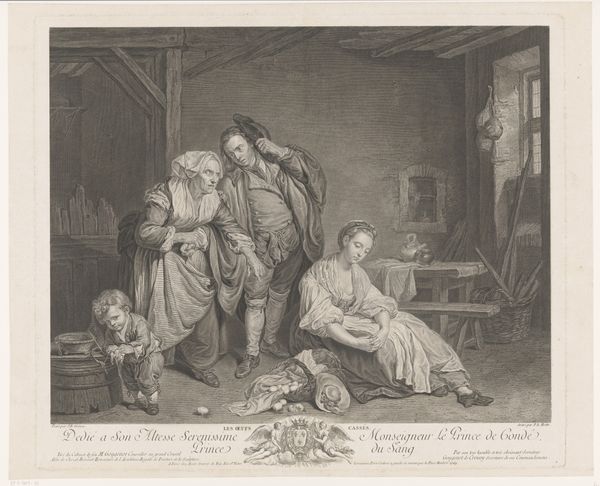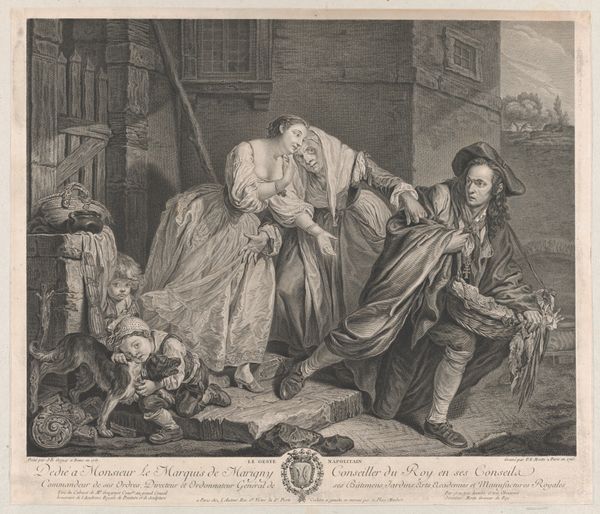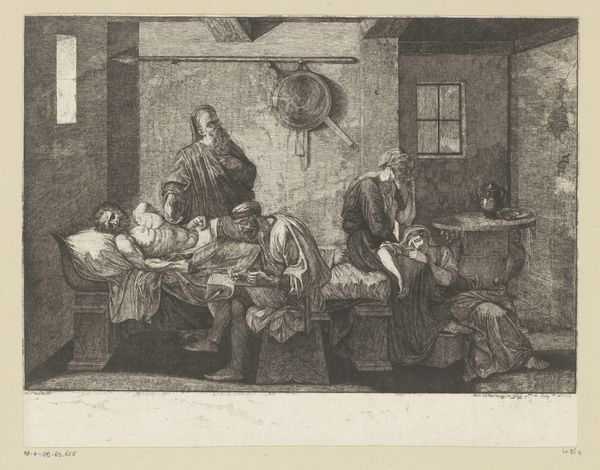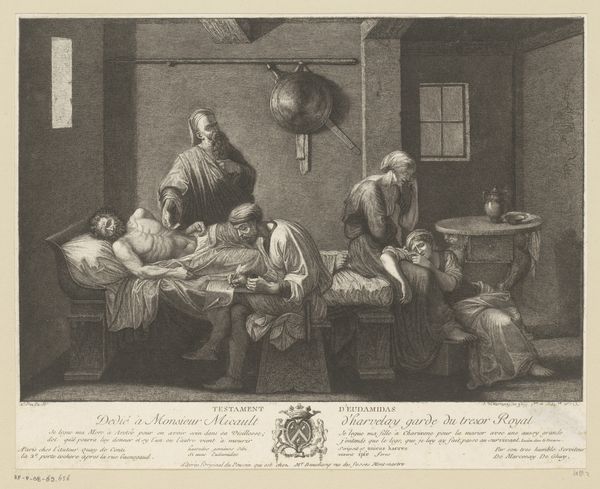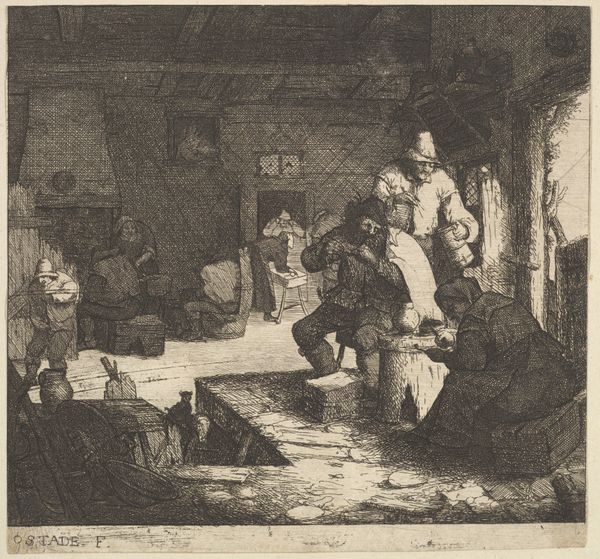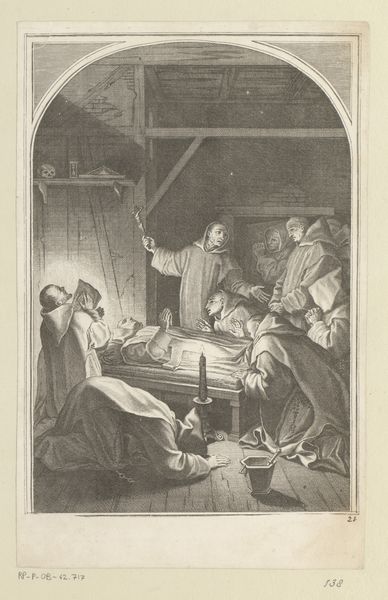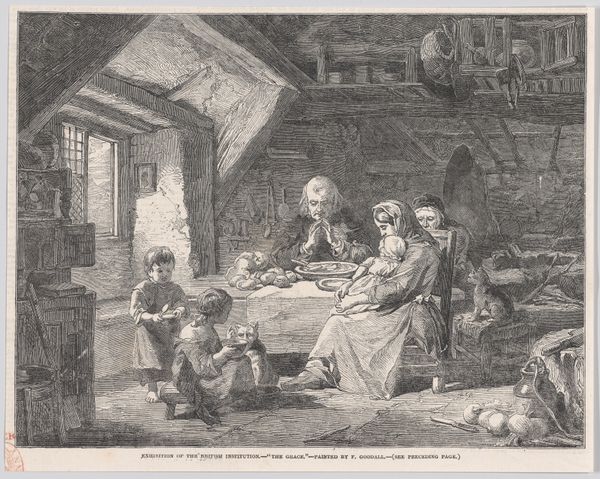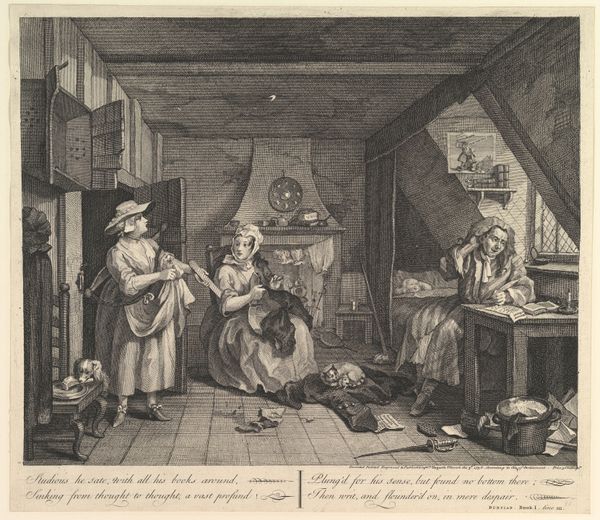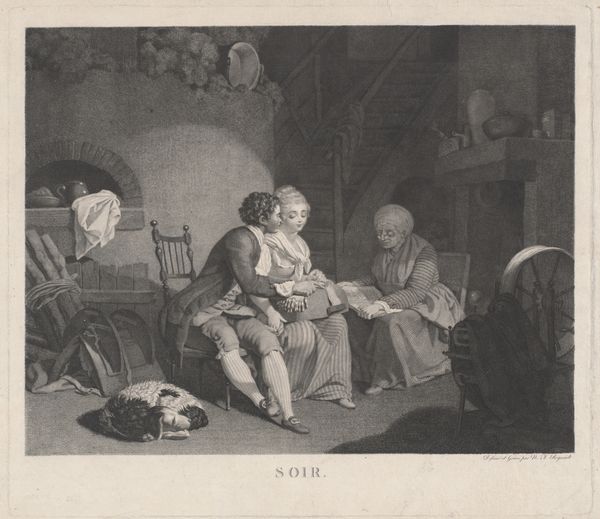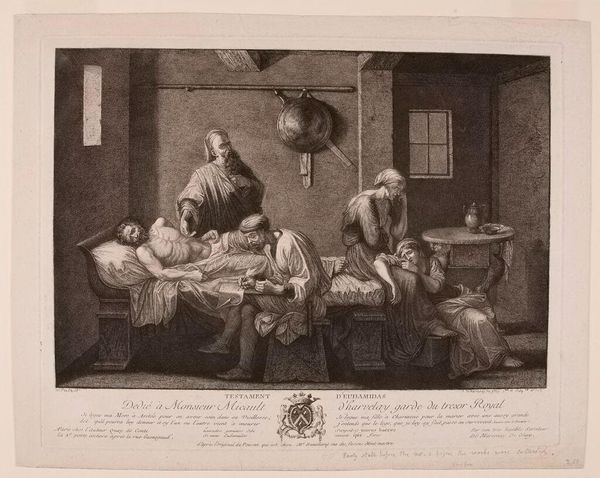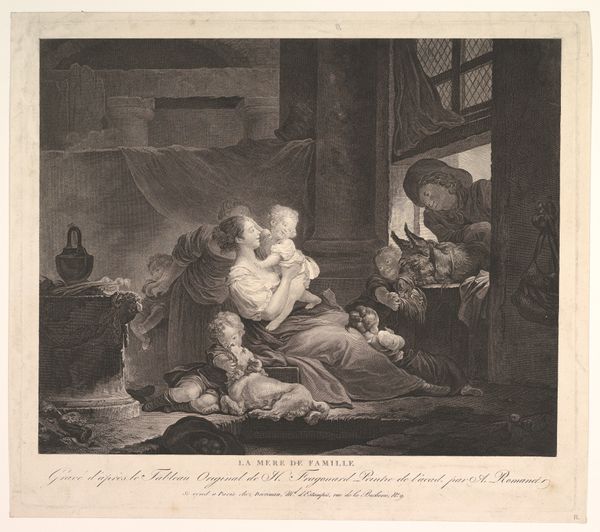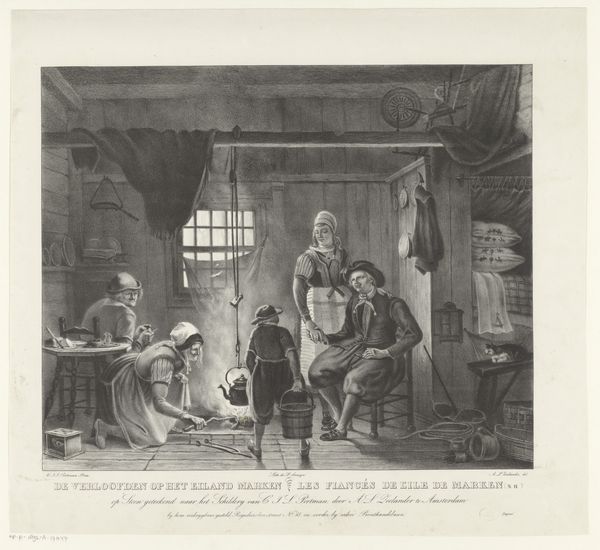
After the Victory, from "Illustrated London News" 1873
0:00
0:00
Dimensions: Image: 9 1/16 × 12 3/8 in. (23 × 31.5 cm) Sheet: 9 3/4 × 12 5/8 in. (24.8 × 32 cm)
Copyright: Public Domain
Editor: So, this is "After the Victory" from the "Illustrated London News," created in 1873 by Richard Principal Leitch. It's a print, an engraving really. There's something intensely melancholic about it, despite the title. How do you interpret this work? Curator: The image is indeed steeped in layers of symbolic weight. The surface narrative suggests a victory, but the imagery speaks volumes about loss. Note the figures—an older woman, a child, and a grieving mother with a baby. Consider the Victorian context: wars, often distant, had profound domestic repercussions. The discarded letter on the floor... what story does it tell us? Editor: It seems the victory came at a high personal cost. Someone's loved one, probably a father or husband, is likely gone. That letter may be the notification. Curator: Precisely. The artist utilizes a common trope: the juxtaposition of public triumph and private sorrow. Victory, often glorified, extracts a toll felt most acutely in the domestic sphere. Look at the spinning wheel—a traditional symbol of domesticity now juxtaposed with the evidence of mourning. What feeling does that evoke? Editor: A sense of disrupted normalcy, the intrusion of national events on personal lives. Curator: The engraving, with its sharp lines and contrasts, intensifies the emotional weight. It isn't simply a record of an event; it's an exploration of cultural memory, reminding us of the enduring human cost hidden behind flags and parades. Editor: I hadn't thought about the contrast between the engraving's starkness and the deep emotion conveyed. Thanks, I’ll certainly be looking at other works with this in mind. Curator: And I am reminded how visual media frames events for emotional consumption, impacting lasting perceptions.
Comments
No comments
Be the first to comment and join the conversation on the ultimate creative platform.
